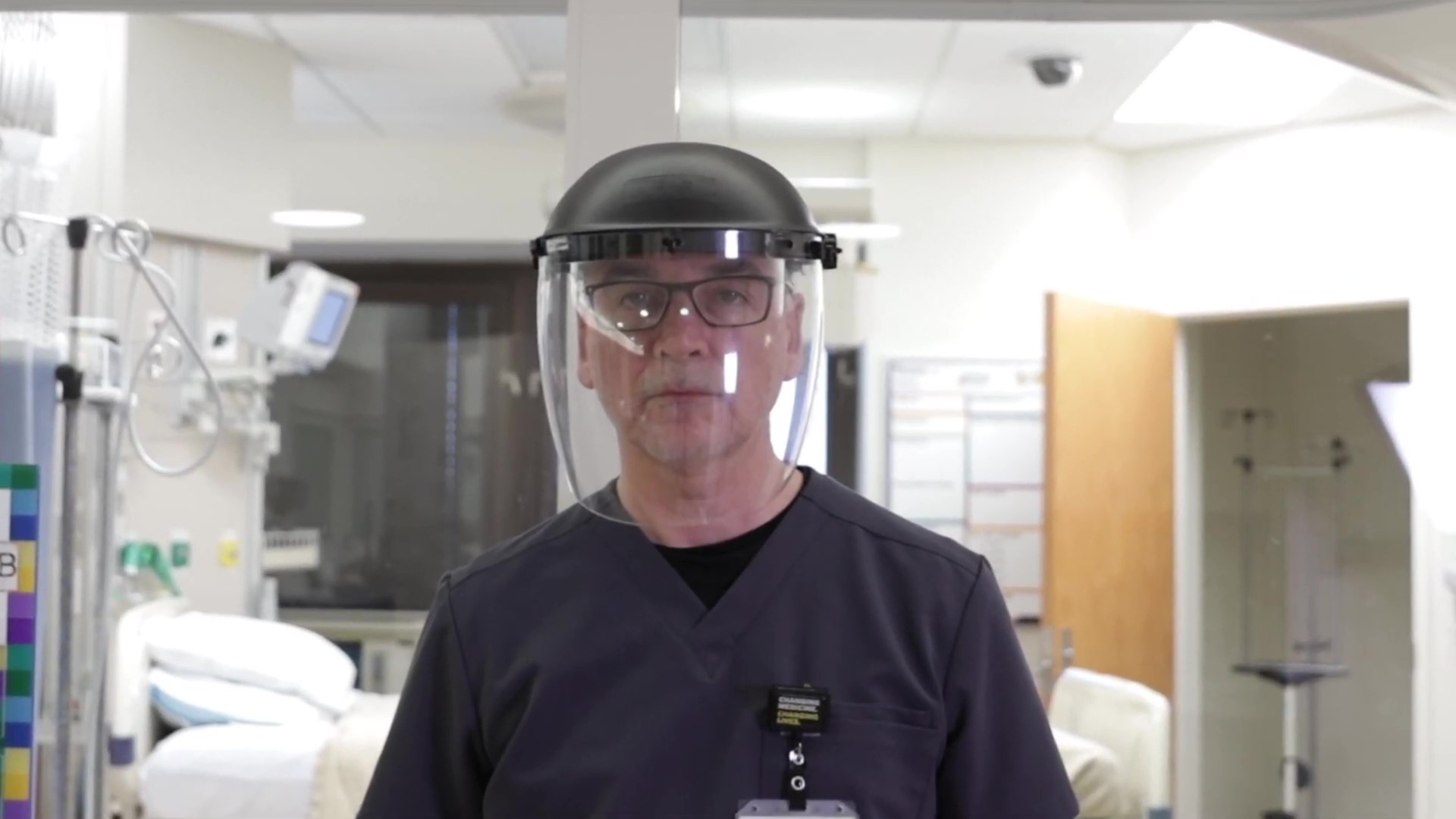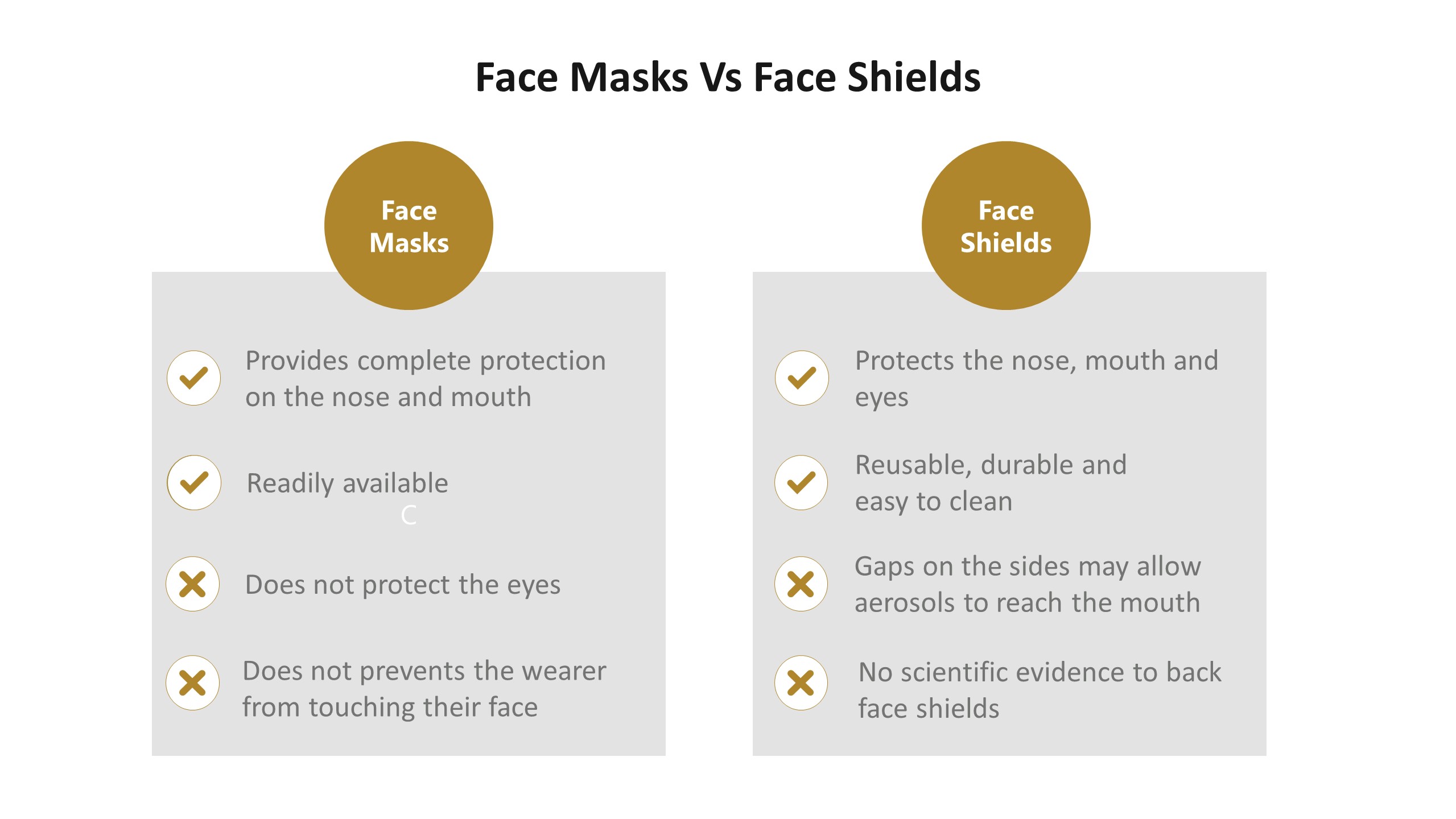03:12

In an attempt to flatten the curve and stop the spread of COVID-19, face masks have become a norm almost the world over. Several countries like Singapore have in fact, made wearing a mask mandatory for their residents whenever they step out of their homes.
But just as people were getting used to masks, another piece of facial protection gear is gaining traction as a tool to prevent coronavirus transmission – the clear plastic face shield.
A team of medical experts from the University of Iowa has stressed that face shields are a more comfortable and more effective deterrent to COVID-19.
In an opinion article published in the Journal of American Medical Association (JAMA), Dr. Eli Perencevich, Dr. Daniel Diekema, and Dr. Michael B. Edmond have argued that simple face shields could help reduce the transmission of infections when accompanied by other measures like increased testing, contact tracing, and social distancing.
"We believe that the face shields really offer a number of significant advantages over masks. For one thing, most people will find a face shield to be more comfortable than a mask, they are not as hot, you feel like you are able to breathe better," said Dr. Edmond, chief quality officer and clinical professor of Infectious Diseases at the University of Iowa Hospitals & Clinics.
Dr. Edmond further added that "the shield also protects your eyes which you don't get with a face mask."
"There are many people who can't wear a face mask because of underlying medical conditions or certain respiratory diseases where you can't have a covering on your mouth," highlighted Dr. Diekema, director of Infectious Diseases Division at the University of Iowa.
Transparent shields do not face the same problem.
In terms of convenience of use, Dr. Diekema went on to add that shields "can be easily cleaned between uses. They are very lightweight, fit very easily, right over your eyes here, go below the chin, around the sides of the face to protect the eyes from droplets, and have a smooth plastic surface, so they can be easily cleaned."
Highly durable and reusable, shields do need to be cleaned regularly to remain effective. The plastic surface of the shields should be cleaned "when they get visibly dirty" or "at least once a day after you take them off." And all one needs is "just plain soap and water" or any "kind of household disinfectant that you may have in your home."
Another argument in favor of face shields by Dr. Edmond is that "a significant proportion of people don't wear their mask correctly. And the other thing is to move the mask, and some people are moving it frequently. They are touching the exterior surface of the mask, which may be contaminated."
As Dr. Diekema explained, there are no such problems with shields.
"It is much harder to wear a face shield incorrectly. Most of them are designed so that they only fit comfortably when the face shield is properly seated in front of the face."
When speaking, people sometimes pull down a mask to make things easier, but again, that isn't necessary with a face shield. "It also allows you to communicate better because you can see people's lips moving, which helps with speech perception," as per Dr. Edmond.

However, not all within the medical community are convinced. Dr. Leong Hoe Nam, who is an infectious disease specialist at Singapore's Mount Elizabeth Novena Hospital, believes that shields can only be effective when worn over a face mask. On their own, they provide little protection.
"Face shields are useful adjuncts. At the base of it, you definitely need a surgical mask, and wearing a face shield on top will be very, very helpful. The main reason is that the face shields only cover the face, and there are obvious gaps that are coming in from the sides and from the top and from the bottom."
Responding to Dr. Leong's criticism, while Dr. Diekema accepted that "that face shields aren't as close to the mouth and nose as face masks," he did add that "if they cover around the sides of the face and below the chin, they will definitely block any large or medium-sized droplets, both protecting the wearer and protecting the person that they are interacting with."
Elaborating further he said, "If you believe that a lot of the transmission is due to very small aerosols that are carried on air currents for extended periods of time, then obviously the face shield will be less protective, but masks, particularly, cloth masks or medical masks, that do not seal also have vulnerabilities there."
There is no scientific evidence or data to back face shields as an effective deterrent.
"The concerns are these, we have no scientific evidence to say that face shields actually block off infections like influenza or the coronavirus in this day and age. We might be doing ourselves a disservice by encouraging the sub-optimal, substandard, inadequate protection of a face shield," added Dr. Leong.
However, the JAMA article did mention a 2014 simulation study where face shields were shown to reduce immediate viral exposure by 96 percent when worn by a simulated health care worker within 18 inches of a cough.
Dr. Edmond breaks it down.
"What they were trying to see is if there were influenza virus in the droplets coming from that simulated cough, would that virus be able to get into the person's nose, mouth, eyes, and infect the person,"
"What they found was at 18 inches, 96 percent of the virus was kept from the person because of the face shield. So, really a very significant effect of the face shield was found in that particular study, using influenza."
Dr. Leong, again, is not convinced.
"Given the limits, I think it is a reasonable study, I think it is well planned out. However, it is still not a real-life experience, and 96 percent may be good enough for the study, but it is not good enough for COVID-19."
"You must remember that the herd immunity for COVID-19 hardly exists and two, the virus spreads very, very easily. We are dealing with a totally new virus that behaves very differently from influenza."
Dr. Diekema and his colleagues have pointed out that no studies have evaluated the ability of face shields to contain a sneeze or cough when worn by infected people. Information on masks, however, is incomplete as well.
The University of Iowa team has called for "studies that make comparisons between face shield and face masks to provide solid evidence as to which of these two devices is more effective."
"We just don't have the data at this point to answer that question, but I think we have looked at what data there do exist and based on what we know about this particular virus and how it spreads and spread appears to be predominantly droplets, that face shields will probably provide better protection than face masks do."
For Dr. Diekema, however, the debate has raised some additional concerns.
"I do worry that this debate about which is better, what kind of face-covering is better, should everyone have a face covering, should it be mandated, should it not. It can distract from the more important prevention approach that should be taken in the community."
"Physical distancing being a major one, but also increased testing and contact tracing and appropriate home isolation and quarantine. Those types of approaches to prevention and eventually hopefully a vaccine will far outweigh minor differences in face coverings that we are arguing about now."